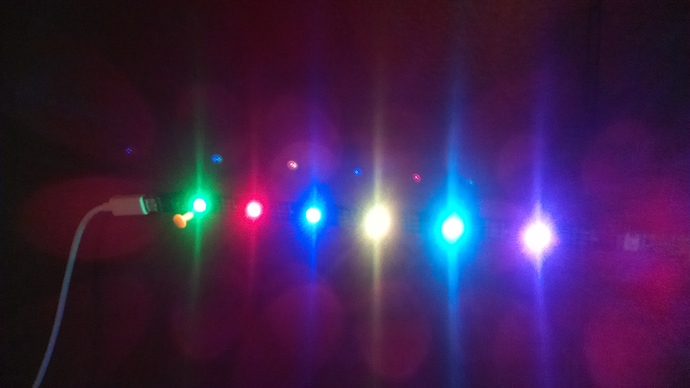Having a little issue with set_led_data in python. Green seems like it’s switched with red.
If I run this:
from blinkstick import blinkstick
stk = blinkstick.find_first()
data = [255,0,0, 255,0,0, 0,255,0, 0,255,0, 0,0,255, 0,0,255]
stk.set_led_data(0, data)I get this:
Instead of this like I would have expected:
I saw it with my music visualization (the pixels towards the middle glow red when they should be green like the image) but I thought it was just a screwup in my code. I couldn’t figure it out and started whittling down code until I got to just this and it’s still here so I figure it’s either a bug or a misunderstanding on my part.



